Pyle PMXU128BT Handleiding
Pyle
Platenspeler
PMXU128BT
Bekijk gratis de handleiding van Pyle PMXU128BT (12 pagina’s), behorend tot de categorie Platenspeler. Deze gids werd als nuttig beoordeeld door 11 mensen en kreeg gemiddeld 4.9 sterren uit 6 reviews. Heb je een vraag over Pyle PMXU128BT of wil je andere gebruikers van dit product iets vragen? Stel een vraag
Pagina 1/12

Wireless BT Streaming Studio Mixer
DJ Controller Audio Mixing Console System
PMXU46BT - PMXU67BT - PMXU88BT - PMXU128BT

Balanced, Unbalanced- What's the Dierence?
In a word: "noise." The whole point of balanced lines is noise rejection, and its something
they're very good at. Any length of wire will act as an antenna to pick up the random
electromagnetic radiation we're constantly surrounded by: radio and TV signals as well as
spurious electromagnetic noise generated by power lines, motors, electric appliances,
computer monitors, and a variety of other sources.The longer the wire, the more noise it is
likely to pick up. That's why balanced lines are the best choice for long cable runs. If your
"studio" is basically conned to your desktop and all connections are no more than a meter
or two in length, then unbalanced lines are ne-unless you're surrounded by extremely high
levels of electromagnetic noise. Another place balanced lines are almost always used is in
microphone cables. The reason for this is that the output signal from most microphones is
very small, so even a tiny amount of noise will be relatively large, and will be amplied to an
alarming degree in the mixer's high-gain head amplier.
Balanced Noise Cancellation
Microphones
Short Line - Level runs
Long Line - Level runs
Use balanced lines.
Unbalanced lines are ne if you’re in a relatively noise-
free environment
The ambient electromagnetic noise level will be the
ultimate deciding factor, but balanced is best
Signal Levels and the Decibel
Let's take a look at one of the most commonly used units in audio: the decibel (dB). If the
smallest sound that can be heard by the human ear is given an arbitrary value of 1, then the
loudest sound that can be heard is approximately 1,000,000 (one million) times louder. That's
too many digits to deal with for practical calculations, and so the more appropriate "decibel"
(dB) unit was created for sound-related measurements. In this system the dierence between
the softest and loudest sounds that can be heard is 120 dB. This is a non-linear scale, and a
dierence of 3 dB actually results in a doubling or halving of the loudness.
You might encounter a number of dierent varieties of the dB: dBu, dBV,dBM and others, but
the dBu is the basic decibel unit. In the case of dBu, "0 dBu" is specied as a signal level of
0.775 volts. For example, if a microphone's output level is -40 dBu (0.00775 V), then to raise
that level to 0 dBu (0.775 V) in the mixer's preamp stage requires that the signal be amplied
by 100 times. A mixer may be required to handle signals at a wide range of levels, and it is
necessary match input and output levels as closely as possible. In most cases the ''nominal"
level for a mixer's input and outputs is marked on the panelor listed in the owner's manual.
Most professional mixers, power ampliers, and other
types of equipment have inputs and outputs with a
nominal level of +4 dBu
The Inputs and outputs on home-use audio gear usually
have a nominal level of .-7.8 dBu (-10 dBV)
Microphone signal levels vary over a wide range depending
on the type of microphone and the source. Avarage speech is
about , but the twittering of a bird might be lower -30 dBu
than while a solid bass drum beat might produce a -50dBu
level as high as 0 dBu
www.PyleUSA.com
1
www.PyleUSA.com
2

To EQ or Not to EQ
In general: less is better. There are many situations in which you'll need to cut certain
frequency ranges, but use boost sparingly, and with caution. Proper use of EQ can eliminate
interference between instruments in a mix and give the overall sound better denition. Bad
EQ-and most commonly bad boost-just sounds terrible.
Cut for a Cleaner Mix
For example: cymbals have a lot of energy in the mid and low frequency ranges that you
don't really perceive as musical sound, but which can interfere with the clarity of other
instruments in these ranges. You can basically turn the low EQ on cymbal channels all the
way down without changing the way they sound in the mix. You'll hear the dierence,
however, in the way the mix sounds more spacious," and instruments in the lower ranges will
have better denition. Surprisingly enough, piano also has an incredibly powerful low end
that can benet from a bit of low-frequency roll -o to let other instruments-notably drums
and bass-do their jobs more eectively. Naturally you won't want to do this if the piano is
playing solo. The reverse applies to kick drums and bass guitars: you can often roll o the
high end to create more space in the mix without compromising the character of the instru-
ments. You'll have to use your ears, though, because each instrument is dierent and some-
times you'll want the snap of a bass guitar, for example, to come through.
The fundamental and harmonic frequency ranges of some musical instruments
Boost with Caution
If you're trying to create special or unusual eects, go ahead and boost away as much as you
like. But if you're just trying to achieve a good-sounding mix, boost only in very small
increments. A tiny boost in the midrange can give vocals more presence, or a touch of high
boost can give certain instruments more "air." Listen, and if things don't sound clear and
clean try using cut to remove frequencies that are cluttering up the mix rather than trying to
boost the mix into clarity. One of the biggest problems with too much boost is that it adds
gain to the signal, increasing noise and potentially overloading the subsequent circuitry.
Fundamental: The frequency that determines the basic musical pitch.
Harmonics: Multiples of the fundamentalfrequency that play a role
in determining the timbre of the instrument.
Some Frequency Facts
The lowest and highest frequencies than can be heard by the human ear are generally
considered to be around 20 Hz and 20,000 Hz. respectively. Average conversation occurs
in the range from about 300Hz to about 3,000 Hz. The frequency of a standard pitchfork
used to tune guitars and other instruments is 440Hz (this corresponds to the "A3" key on
a piano tuned to concert pitch). Double this frequency to 880Hz and you have a pitch
one octave higher (i.e"A4" on the piano keyboard). In the same way you can halve the
frequency to 220Hz to produce "A2" an octave lower.
www.PyleUSA.com
3
www.PyleUSA.com
4
Product specificaties
| Merk: | Pyle |
| Categorie: | Platenspeler |
| Model: | PMXU128BT |
Heb je hulp nodig?
Als je hulp nodig hebt met Pyle PMXU128BT stel dan hieronder een vraag en andere gebruikers zullen je antwoorden
Handleiding Platenspeler Pyle
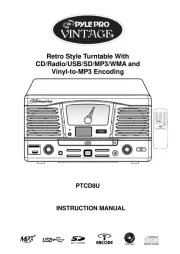
6 Mei 2025
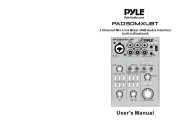
15 November 2024

5 November 2024

24 Februari 2024

24 Februari 2024

25 Mei 2023

11 Mei 2023

7 Mei 2023

25 April 2023

15 April 2023
Handleiding Platenspeler
- Sunstech
- McIntosh
- LKKRO
- Crosley
- Metronic
- Elac
- SPL
- Veho
- Ion
- Swan
- Essentiel B
- Audizio
- Angels Horn
- Orava
- Medion
Nieuwste handleidingen voor Platenspeler
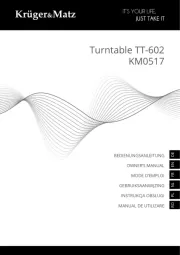
13 September 2025
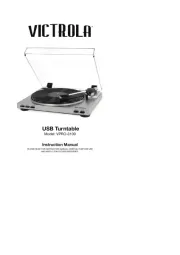
31 Augustus 2025
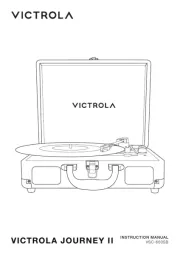
25 Augustus 2025
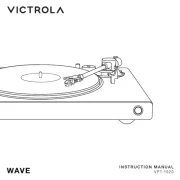
25 Augustus 2025
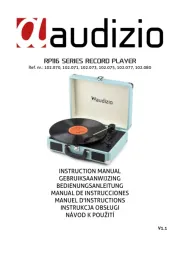
25 Augustus 2025
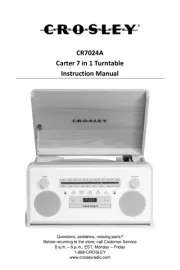
11 Augustus 2025
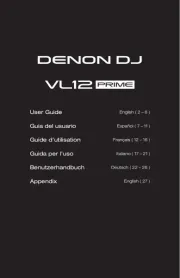
4 Augustus 2025
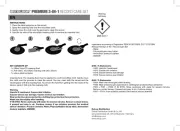
4 Augustus 2025
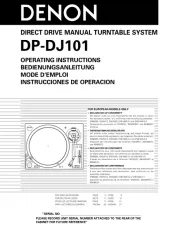
29 Juli 2025
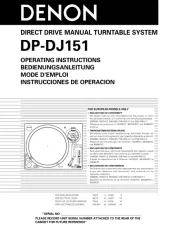
29 Juli 2025